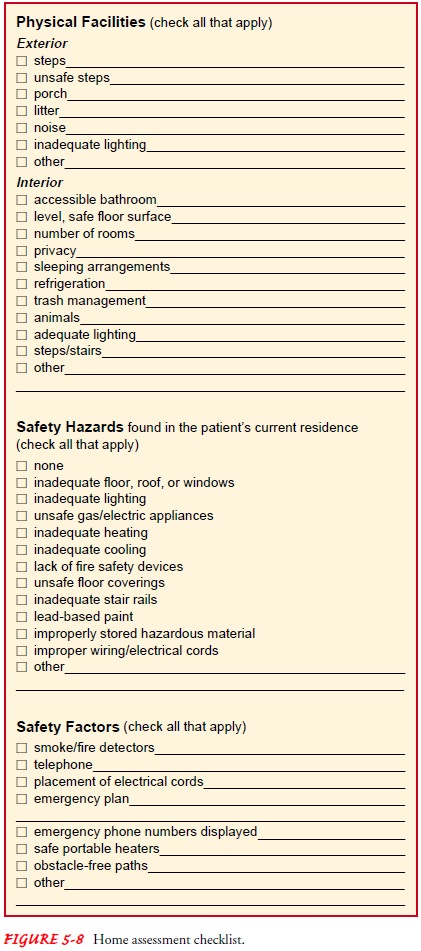Chapter: Medical Surgical Nursing: Health Assessment
Assessment in the Home and Community
Assessment in the Home and Community
Assessment of the person in community settings, including the home, consists of collecting information specific to existing health problems, including the patient’s physiologic and emo-tional status, the community and home environment, the ade-quacy of support systems or care given by family and other care providers, and the availability of needed resources. In addition, the ability of the individual and family to cope with and address their respective needs is evaluated. The physical assessment in the community and home consists of the same techniques used in the hospital, outpatient clinic, or office setting. Privacy is provided and the person is made as comfortable as possible.
A call made to the
patient’s home before the first home visit lets the patient know when to expect
the home care nurse and also provides the opportunity for the patient’s primary
caregiver to be available. During the home visit, the nurse’s assessment is not
limited to physical assessment of the patient. Other aspects of assessment
include the home environment, safety factors (eg, smoke alarms, obstacles,
safety bars in the bathroom), ade-quacy of facilities required for the
patient’s care and recovery, food preparation and storage facilities, bathroom
facilities, ac-cess to a telephone, and the availability of family and
commu-nity supports. Because patients may have no family membersavailable to
assist them and may live alone in substandard hous-ing or homeless shelters,
the nurse needs to be aware of re-sources available in the community and
methods of obtaining those resources for the patient. Figure 5-8 provides an
example of a checklist that may be useful in conducting an assessment in the
home

Related Topics